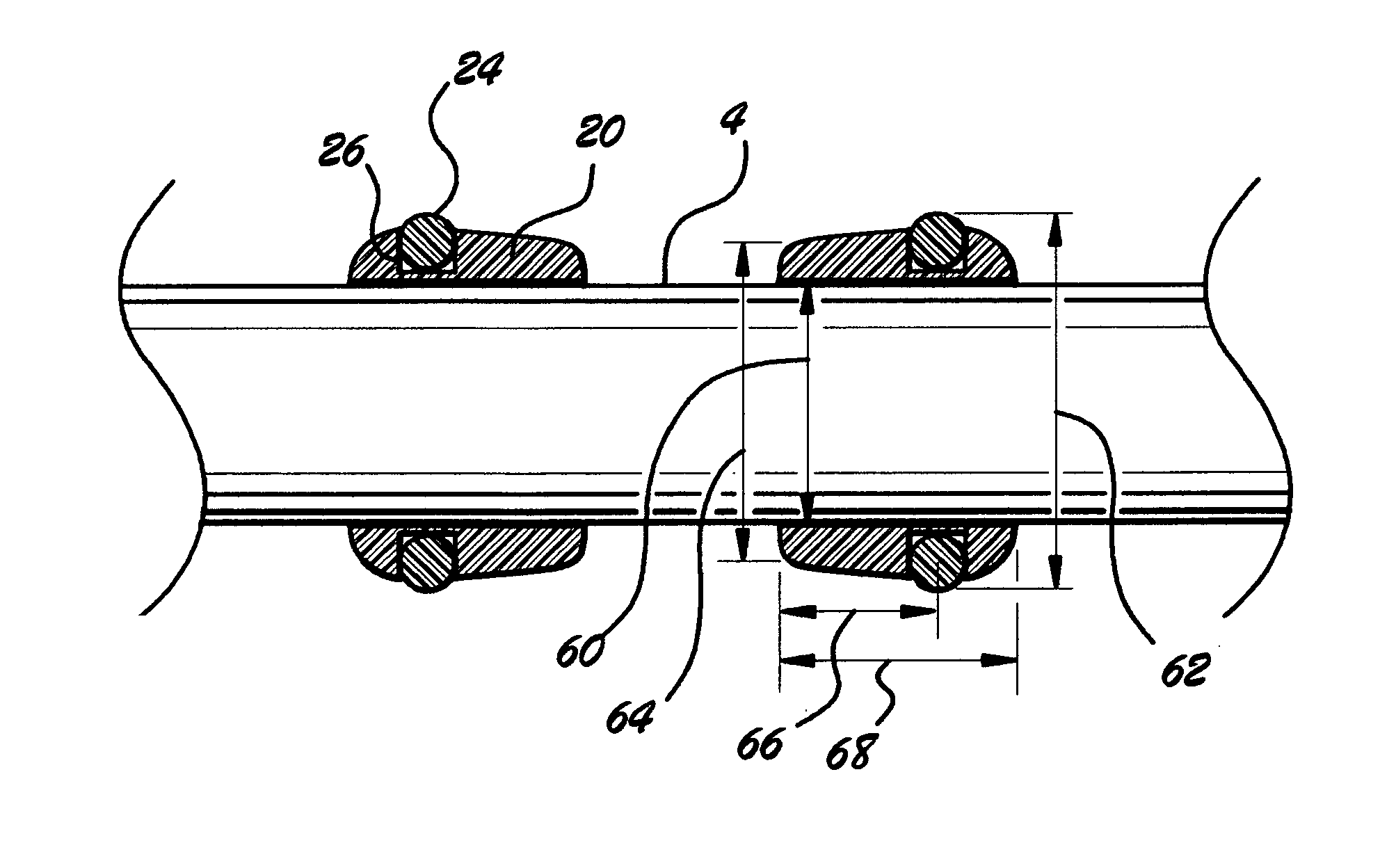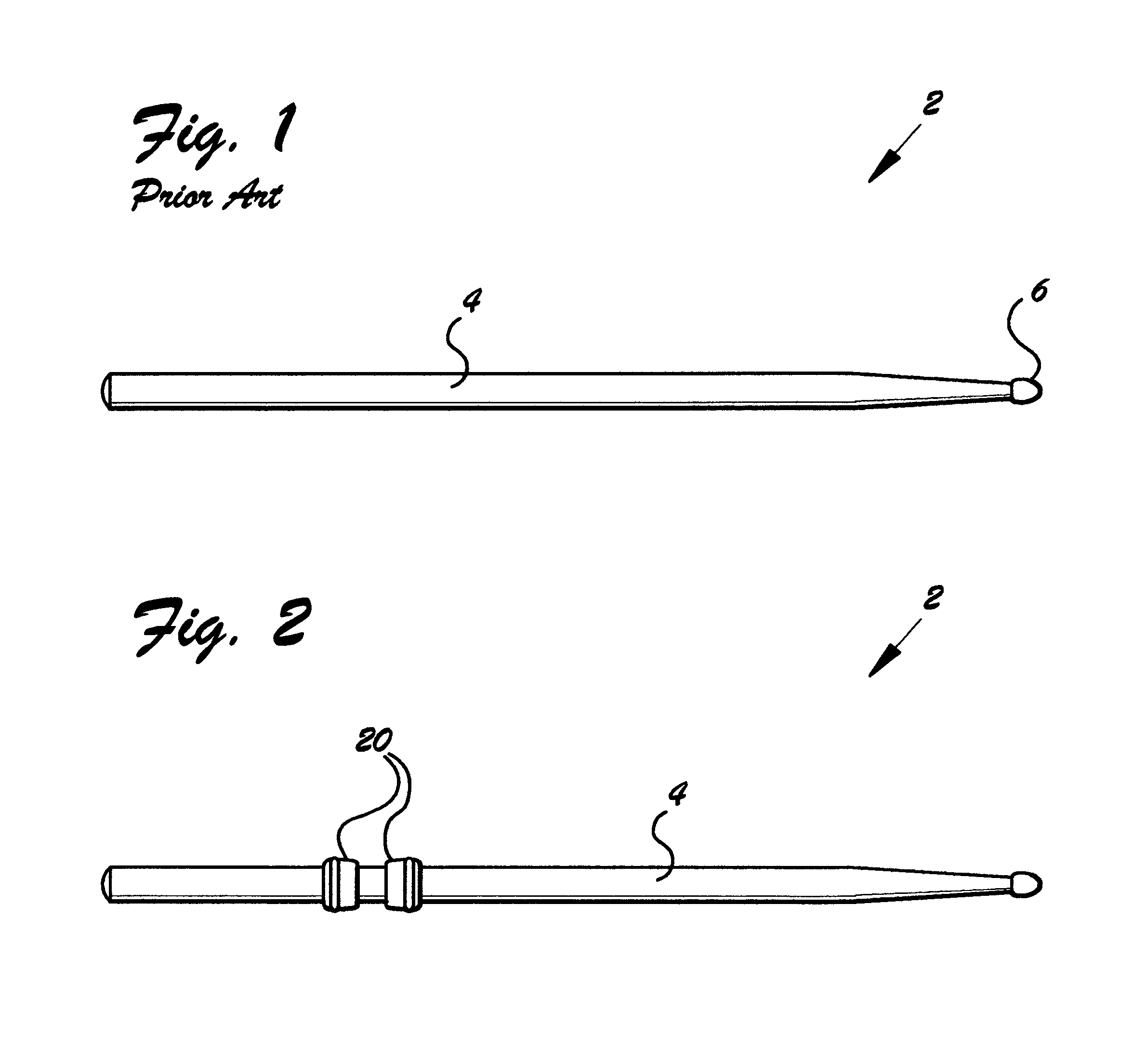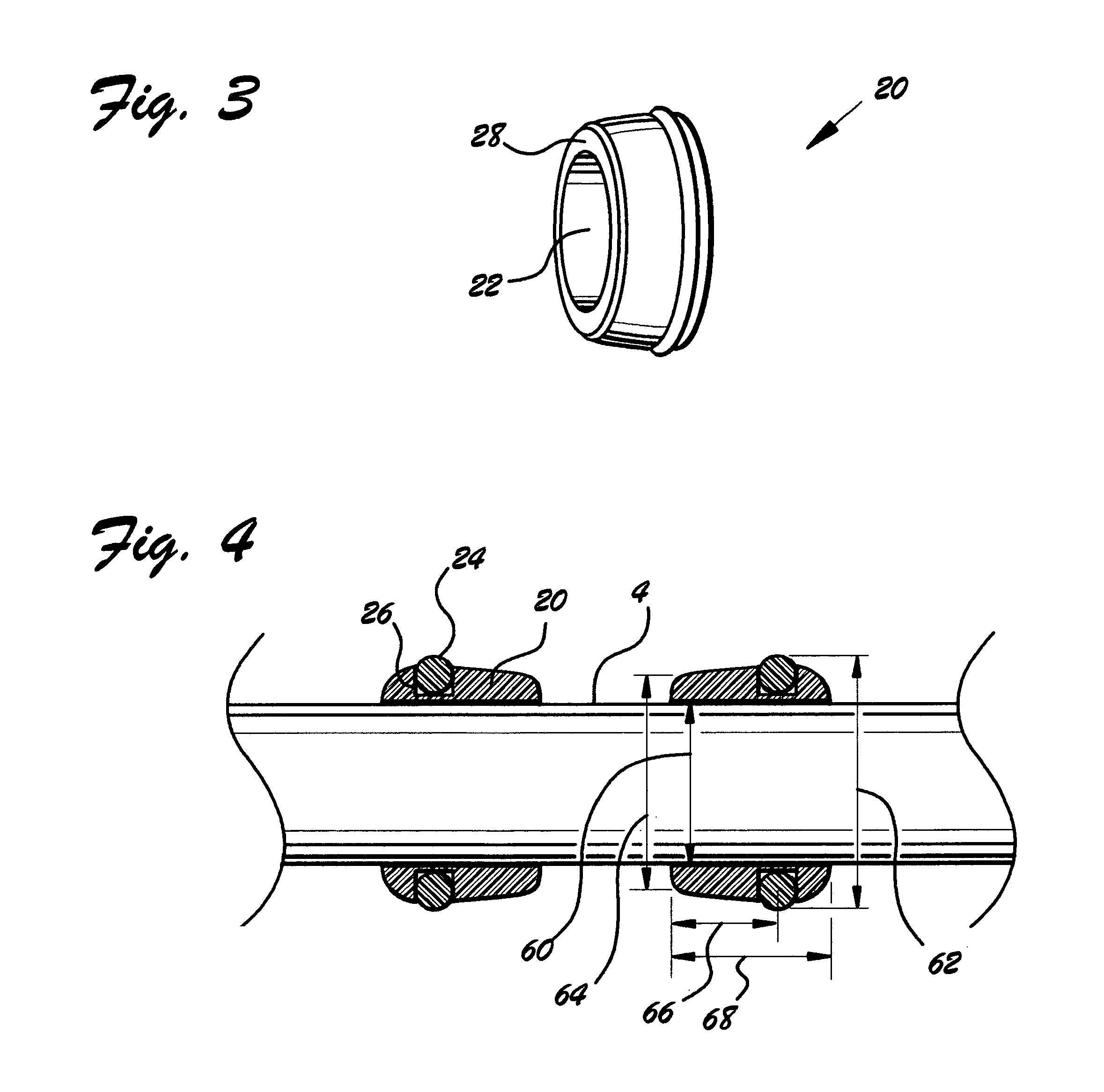Ergonomic rings for drum sticks, method of installation, and method of use
a technology of ergonomic rings and drum sticks, which is applied in the field of ergonomic rings for drum sticks, can solve the problems of prior art drum sticks, especially pronounced, inherent slippery nature of polished wood from which traditional drum sticks are manufactured, and achieve the effects of reducing the loss of drum sticks, and ensuring the accuracy of holding drum sticks
- Summary
- Abstract
- Description
- Claims
- Application Information
AI Technical Summary
Benefits of technology
Problems solved by technology
Method used
Image
Examples
Embodiment Construction
[0039]Referring now to FIG. 2, we observe a side isometric view of drum stick 2 with a pair of ergonomic rings 20 installed on its shaft 4. As may be observed in FIG. 3, a side quarter isometric view of ergonomic ring 20, ergonomic ring 20 comprises ergonomic ring bore 22. Ergonomic ring bore 22 is sized to frictionally admit shaft 4.
[0040]In addition, in the preferred embodiment, ergonomic ring 20 was manufactured of resilient material such as rubber. Thus, ergonomic ring 20 is capable of stretching to admit shaft 4. Once ergonomic ring 20 has been installed on shaft 20, its inherent resilience causes it to tightly grip shaft 4, thus maintaining its position in a desired location on shaft 4.
[0041]FIG. 4 is a side cross-sectional view of a pair of ergonomic rings 20 installed on a drum stick shaft 4. In the preferred embodiment, ergonomic ring 20 incorporated ergonomic ring groove 26 around its outer surface. Ergonomic ring groove 26 is sized to admit O-ring 24. O-ring 24 serves to ...
PUM
 Login to View More
Login to View More Abstract
Description
Claims
Application Information
 Login to View More
Login to View More - R&D
- Intellectual Property
- Life Sciences
- Materials
- Tech Scout
- Unparalleled Data Quality
- Higher Quality Content
- 60% Fewer Hallucinations
Browse by: Latest US Patents, China's latest patents, Technical Efficacy Thesaurus, Application Domain, Technology Topic, Popular Technical Reports.
© 2025 PatSnap. All rights reserved.Legal|Privacy policy|Modern Slavery Act Transparency Statement|Sitemap|About US| Contact US: help@patsnap.com



